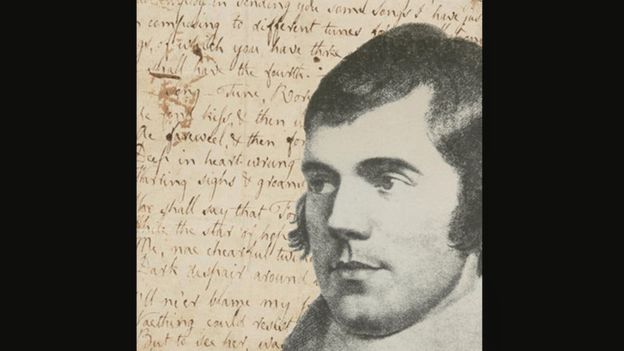

Nevertheless, (and having said all that), if the reader wants to read it in the spirit in which Burns’ wrote it, he or she should try to read the first lines as trochaic, in accordance with the first scansion. Only in the third and fourth lines does Burns unambiguously push the lines into a trochaic reading. The third foot in the first and second lines are heard as feminine endings. So, rather than hearing trochaic feet, we hear it as an anapest followed by a solid iambic foot. Only mid-way through the melody do we really know what key we’re in. In musical terms, it’s as if Burns failed to establish the tonic. It’s not until we get past the first two lines that Burns’ metrical intentions become clear.

The poet must go the extra mile to enforce the trochaic rhythm, otherwise the ear will naturally want to read iambs – which is what happens in the lines above and which is why, at first glance, the poem’s meter is deceptively obscure. This is what makes writing trochees so devilishly difficult. The iambic pull is too hard to resist when the lines begin with the weak indefinite article Ae or (modern spelling) A. Notice that the first lines are read as iambic trimeter.

However, most readers, probably even in Burns’ day, will be more inclined to (subconsciously) read the lines as follows: Here’s how Burns would like us to read the first four lines (and how some instructors may want to scan the lines): Rather than go line by line, as is my usual habit, I’ll try not to extenuate. Here’s the poem by Burns, unmolested by my commentary.ĭeep in heart-wrung tears I’ll pledge thee,Īnd now to the commentary.

Up to this very sentence, all but one have ended on a strong or intermediate stress. Listen to yourself talk, and you may notice that almost all of your sentences end with a strong syllable. The rythm of spoken English is naturally iambic. The devilishly difficult part is making the ear hear the lines as trochaic rather than iambic. Writing lines that begin with a stressed syllable and end with an unstressed syllable, as Burns does, is the easy part. Writing trochaic poetry is devilishly difficult. What a surprise! As it turns out, Burns has tried his hand at a trochaic poem. I noticed that someone searched for the meter to Burn’s Ae fond kiss. I recently wrote a post analyzing a more successful poem written in Trochaic Tetrameter – Edna St Vincent Millay’s Sorrow.


 0 kommentar(er)
0 kommentar(er)
